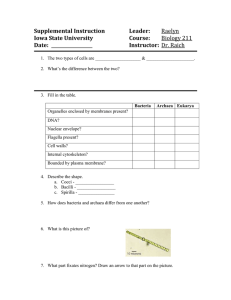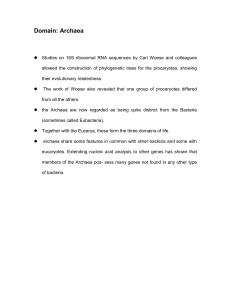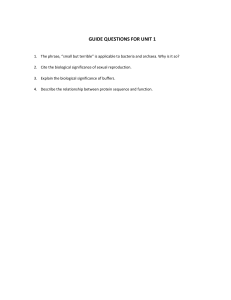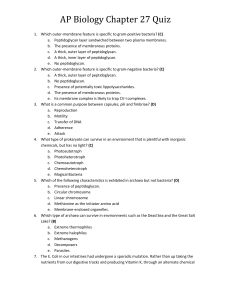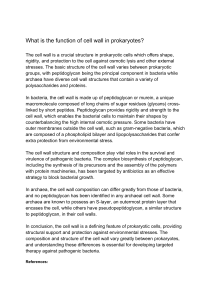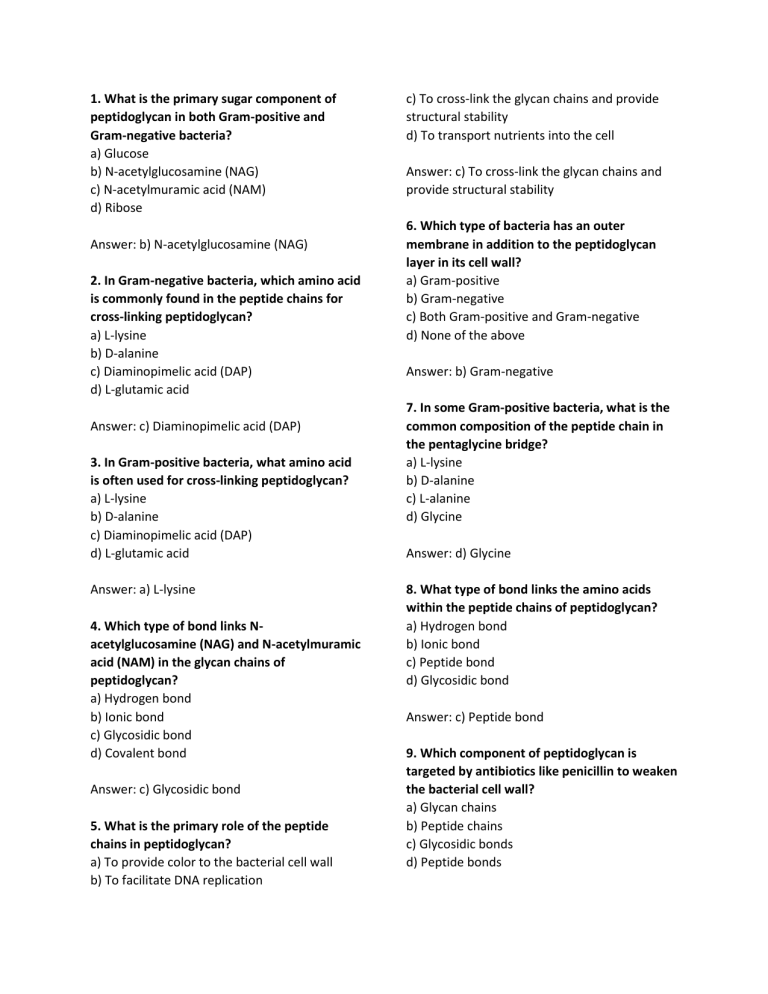
1. What is the primary sugar component of peptidoglycan in both Gram-positive and Gram-negative bacteria? a) Glucose b) N-acetylglucosamine (NAG) c) N-acetylmuramic acid (NAM) d) Ribose Answer: b) N-acetylglucosamine (NAG) 2. In Gram-negative bacteria, which amino acid is commonly found in the peptide chains for cross-linking peptidoglycan? a) L-lysine b) D-alanine c) Diaminopimelic acid (DAP) d) L-glutamic acid Answer: c) Diaminopimelic acid (DAP) 3. In Gram-positive bacteria, what amino acid is often used for cross-linking peptidoglycan? a) L-lysine b) D-alanine c) Diaminopimelic acid (DAP) d) L-glutamic acid Answer: a) L-lysine 4. Which type of bond links Nacetylglucosamine (NAG) and N-acetylmuramic acid (NAM) in the glycan chains of peptidoglycan? a) Hydrogen bond b) Ionic bond c) Glycosidic bond d) Covalent bond Answer: c) Glycosidic bond 5. What is the primary role of the peptide chains in peptidoglycan? a) To provide color to the bacterial cell wall b) To facilitate DNA replication c) To cross-link the glycan chains and provide structural stability d) To transport nutrients into the cell Answer: c) To cross-link the glycan chains and provide structural stability 6. Which type of bacteria has an outer membrane in addition to the peptidoglycan layer in its cell wall? a) Gram-positive b) Gram-negative c) Both Gram-positive and Gram-negative d) None of the above Answer: b) Gram-negative 7. In some Gram-positive bacteria, what is the common composition of the peptide chain in the pentaglycine bridge? a) L-lysine b) D-alanine c) L-alanine d) Glycine Answer: d) Glycine 8. What type of bond links the amino acids within the peptide chains of peptidoglycan? a) Hydrogen bond b) Ionic bond c) Peptide bond d) Glycosidic bond Answer: c) Peptide bond 9. Which component of peptidoglycan is targeted by antibiotics like penicillin to weaken the bacterial cell wall? a) Glycan chains b) Peptide chains c) Glycosidic bonds d) Peptide bonds Answer: d) Peptide bonds 10. What is the primary role of peptidoglycan in bacterial cells? a) To store genetic information b) To protect against desiccation c) To provide structural support and maintain cell shape d) To facilitate cellular respiration Answer: c) To provide structural support and maintain cell shape 1. What is the primary role of peptidoglycan in bacterial cell walls? a) Energy storage b) Protection against UV radiation c) Structural support and maintenance of cell shape d) Facilitating protein synthesis Answer: c) Structural support and maintenance of cell shape 2. Which sugar molecule is a component of the glycan chains in peptidoglycan? a) Glucose b) Fructose c) N-acetylmuramic acid (NAM) d) N-acetylgalactosamine (NAG) Answer: c) N-acetylmuramic acid (NAM) 3. In Gram-negative bacteria, what is the primary role of DAP (diaminopimelic acid) in peptidoglycan? a) To provide color to the cell wall b) To form glycosidic bonds c) To cross-link the peptide chains d) To transport nutrients into the cell Answer: c) To cross-link the peptide chains 4. What is the main function of the peptide chains in peptidoglycan? a) Storing genetic information b) Facilitating cell division c) Cross-linking the glycan chains to provide strength d) Catalyzing metabolic reactions Answer: c) Cross-linking the glycan chains to provide strength 5. Which type of bond links the amino acids within the peptide chains of peptidoglycan? a) Hydrogen bond b) Ionic bond c) Peptide bond d) Glycosidic bond Answer: c) Peptide bond 1. With distinct nucleus a) Archaea b) Archaea and Bacteria c) Neither archaea nor bacteria Correct Answer: Neither archaea nor bacteria. 2. Prokaryotic organisms a) Archaea b) Archaea and Bacteria c) Neither archaea nor bacteria Correct Answer: Archaea and Bacteria. 3. Reproduce by binary fission a) Archaea b) Archaea and Bacteria c) Neither archaea nor bacteria Correct Answer: Archaea and Bacteria. 4. Carry out methanogenesis a) Archaea b) Archaea and Bacteria c) Neither archaea nor bacteria Correct Answer: Archaea. 5. Cell wall is made up of pseudopeptidoglycan a) Archaea 5. Cell wall is made up of pseudopeptidoglycan a) Archaea b) Archaea and Bacteria c) Neither archaea nor bacteria Correct Answer: Archaea.
